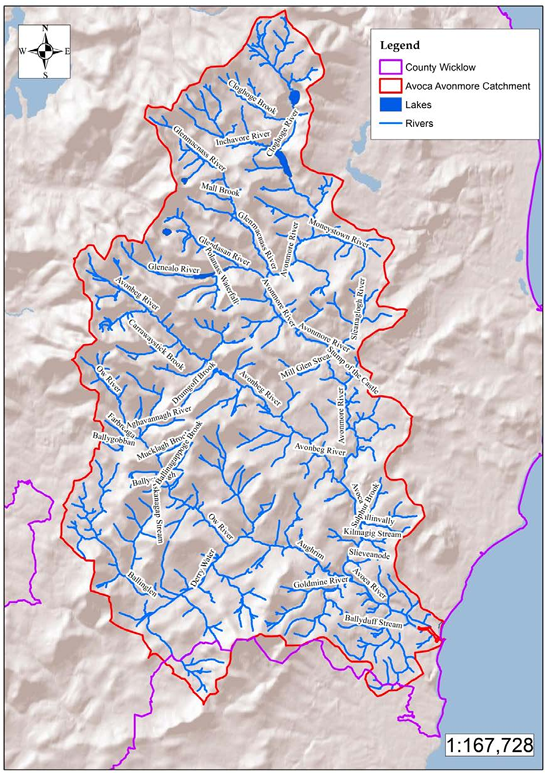Rivers and Lakes in the Avoca–Avonmore Catchment
Rivers in the Avoca-Avonmore catchment
The rivers and lakes within the Avoca–Avonmore catchment are naturally acidic, a result of the underlying geology of the area. Over most of their courses, the rivers can be described as “Eroding Upland Rivers,” according to the Heritage Council’s habitat classification. These rivers are not specifically designated under the EU Habitats Directive, but they form an important part of the catchment’s natural landscape.
Derrybawn Bridge over the Glendasan River in Laragh.
Photo by Faith Wilson
All of the catchment lakes are oligotrophic — meaning that their waters are low in nutrients and acidic. These lakes are typically found over granite or schist bedrock, examples of which include Lough Dan, Lough Tay, and the Glendalough Lakes.
Along their rocky or stony shores, distinctive submerged plants such as quillwort and shoreweed can be found growing. These plants are characteristic of these clear, nutrient-poor waters.
In addition to the oligotrophic lakes, the catchment also contains dystrophic lakes and ponds. These occur in areas of blanket bog and, like the upland lakes, are poor in nutrients and acidic. The water in these lakes is often brown in colour, due to humic acids that drain from the surrounding blanket bog.
All of the lakes within the catchment are located inside the Wicklow Uplands Special Area of Conservation (SAC). Within this area, they are recognised as Annex I habitats under the EU Habitats Directive, highlighting their ecological importance and the need to protect them.


